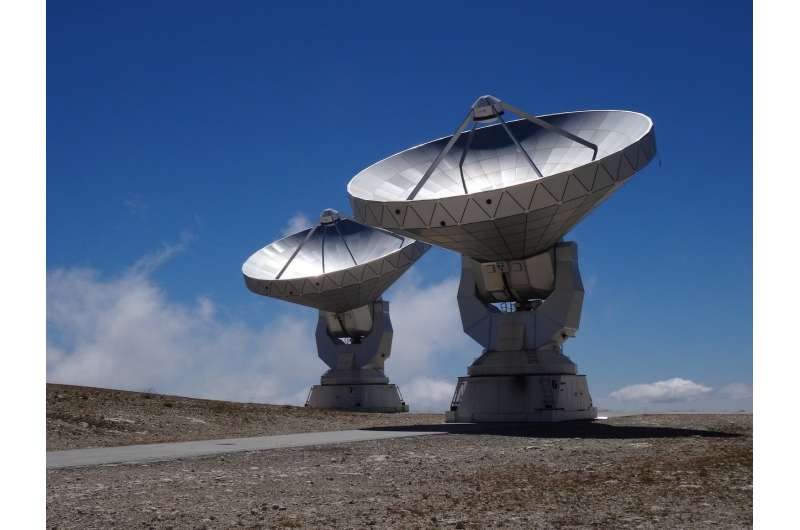September 28, 2018 report
A model that computes the fraction of the 'haystack' that SETI programs have collectively examined

Why haven't we found evidence of life anywhere but Earth? A trio of astrophysicists has revisited this question by taking a closer look at the "needle in a haystack" analogy. Their analysis involved creating a model to assess the amount of work that has been done searching for extraterrestrial life, the Search for Extra-terrestrial Intelligence (SETI) project, compared to how much is required before scientists can rule out the possibility that there is none. Jason Wright, Shubham Kanodia and Emily Lubar have written a paper describing their efforts and uploaded it to the arXiv preprint server.
While it might seem to people who are not space scientists that humans have done an awful lot of work searching for signs of life on other worlds, the truth is quite the opposite. Back in 2010, well-known space scientist Jill Tarter compared the search thus far to peering at a glass of water looking for fish while standing next to the still unexplored ocean. In their new effort, Wright, Kanodia and Lubar have created a model that they believe better frames the effort to date. Their model uses inputs such as the number of searches conducted and amount of space covered, and compares them to estimates of the size and intricacy of the galaxy and universe beyond.
In their work, the researchers focus on the more traditional types of searching methods—using telescopes and other advanced equipment to study signals that arrive here on Earth from other places. This, of course, rules out the possibility of extraterrestrial life already residing here on Earth or unexplained phenomena such as UFOs.
The researchers have found Tarter's analogy to be quite close to reality, though they would bump the sample size from a glass to a swimming pool. But they also note that another famous analogy might need modification. They suggest the search for extraterrestrial life might be more akin to searching for any one of multiple needles in a proverbial haystack, rather than just one. But they also note that all we really need to find is just the one.
More information: How Much SETI Has Been Done? Finding Needles in the n-Dimensional Cosmic Haystack, arXiv:1809.07252 [astro-ph.IM] arxiv.org/abs/1809.07252
Journal information: arXiv
© 2018 Phys.org




















